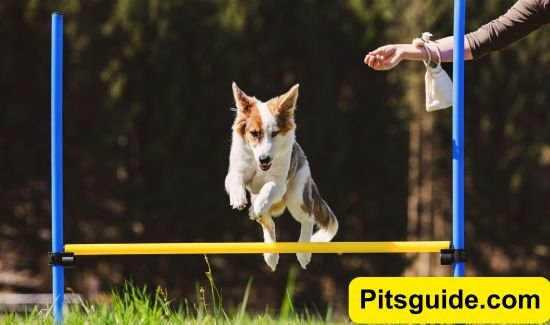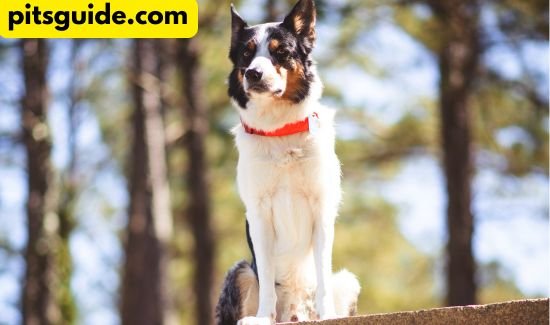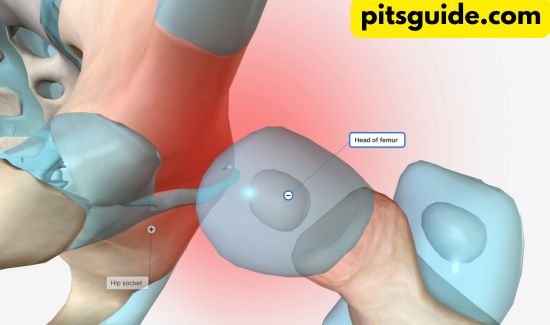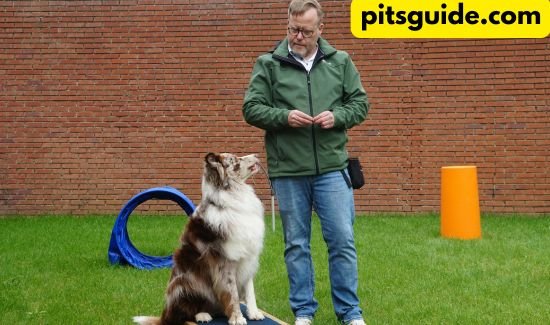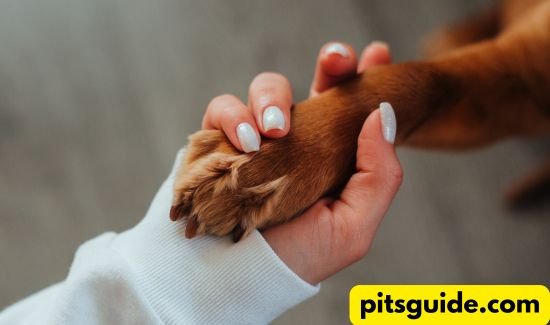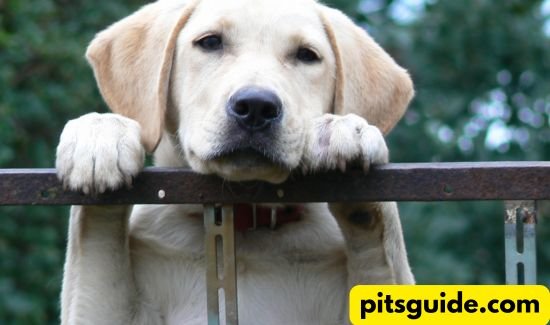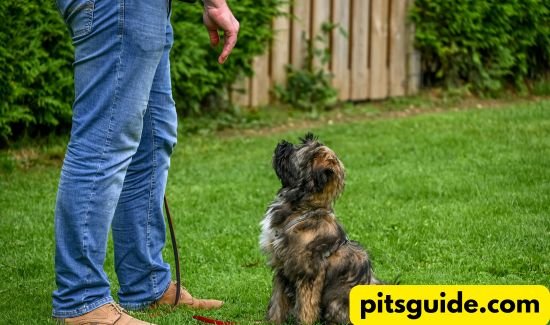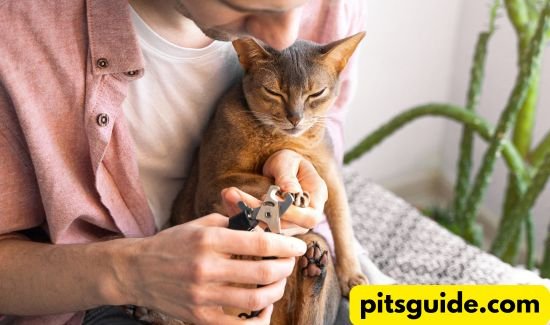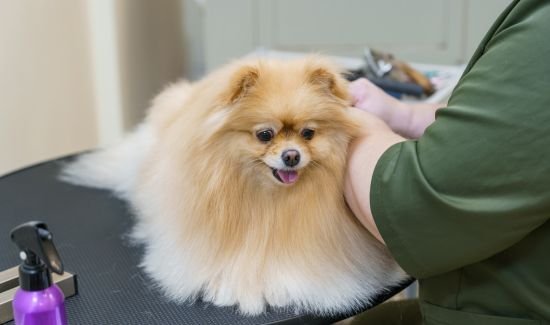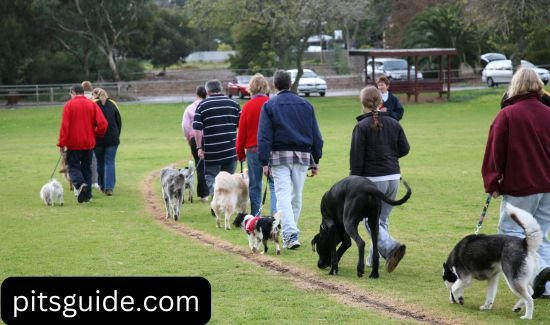Table of Contents
Introduction:
1.Why Strength Training for Dogs Matters
2. Key Takeaways of Strength Training for Dogs
3. The Importance of Building Muscle and Strength for Dogs
4. Benefits of Muscle Building Exercises for Dogs
5. Exercise Recommendations for Muscle Building
– Swimming
– Weight Pulling
– Stair Climbing
6. Consult Your Veterinarian Before Starting
7. Incorporating Rest, Recovery, and Diet
8. The Role of Protein in Muscle Building
9. Warm-up and Cool-down Exercises
10. Swimming as an Excellent Full-Body Exercise
11. Resistance Training with Weight Pulling
– Proper Equipment for Weight Pulling
12. Training Tips for Stair Climbing and Jumping
13. Strength-Building Games for Dogs
– Tug-of-War
– Weighted Fetch
14. Bodyweight Exercises for Dogs
– Squats
– Backward Walking
– Ankle Weights
15. Incorporating Mental Stimulation and Enrichment
16. Training Tips Roundup
– Gradual Progression
– Proper Rest and Recovery
– Close Monitoring
– Warm-ups and Cool-downs
– Veterinary Consultation
17. Conclusion: Benefits of Strength Training for Dogs
18. FAQs
– What are the benefits of muscle conditioning exercises for dogs?
– What are some key components of a muscle-building program for dogs?
– What are some effective strength-building exercises for dogs?
– How can muscle-building exercises benefit a dog’s mental health?
– What safety precautions should be taken when implementing a muscle-building program?
Introduction:
Want to make your dog stronger and healthier? Strength training can do just that. It makes your dog more confident and fit. Let’s explore how to build muscle and strength in our furry friends.
Key Takeaways
- Muscle conditioning exercises can benefit dogs of all ages and health levels, including those recovering from injuries or dealing with degenerative issues.
- Building muscle helps prevent injuries by providing stability to joints and tendons, and increases bone density.
- For aging dogs, strength training can slow down or even reverse age-related weakness.
- Strengthening exercises boost the cardiovascular system and reduce fat, preventing obesity.
- Muscle-building activities provide mental stimulation and enrichment, preventing behavior issues and building confidence in timid or anxious dogs.
The Importance of Building Muscle and Strength for Dogs
Dogs, like humans, can greatly benefit from strength training. It helps them stay physically fit and mentally sharp. Whether they’re young and active or older, exercises can make a big difference.
Benefits of Muscle Building Exercises for Dogs
Strength training helps dogs in many ways:
- It prevents injuries by strengthening joints and bones.
- It helps older dogs stay strong and move better.
- It boosts their heart health and immune system.
- It makes them sleep and eat better too.
Protein is key for muscle repair and health. Dogs need high-quality protein, like chicken, in their diet.
| Exercise | Benefits |
| Swimming | Works the whole body, easy on joints |
| Weight Pulling | Builds muscle and improves technique |
| Stair Climbing | Strengthens the back and legs |
Consult your veterinarian before beginning an exercise regimen. They’ll make sure it’s right for your dog. This way, your pet can live a stronger, happier life.
Incorporating Rest, Recovery, and Diet
Rest, recovery, and good food are as important as exercise for muscle growth. Don’t push your dog too hard. Let them recover fully before doing more. Eating the right foods, especially proteins, helps build muscle.
The Role of Protein in Muscle Building
Protein helps fix muscles and grow new ones. It also maintains the health of your dog’s coat and skin.Dogs need some amino acids from food, as they can make others.
Studies say dogs need about 1.6 grams of protein per kilogram of body weight per day for muscle growth. For muscle, experts advise consuming 1.4–2.0 grams per kilogram.
Drinking enough water is also key for muscle repair.For each kilogram of weight lost when exercising, try to consume 1.5 liters of liquid.
According to reports, some professional athletes get 10 hours or more of sleep every night, which is essential for muscle repair.
Techniques like massage and cryotherapy can also help. A mix of rest, recovery, and nutrition is best for your dog’s muscle growth.
Warm-up and Cool-down Exercises
Getting your dog ready for exercise is key to avoid injuries and get the most from workouts. Before starting, warm up your dog. This increases their heart rate, gets blood to muscles, and boosts flexibility and range of motion.
A 5-10 minute warm-up can really help. Start with a slow walk, then pick up the pace, or play fetch. This warms up muscles and prepares your dog for harder activities.
After exercising, cooling down is just as important. Do some light stretching and gentle moves. This keeps muscles flexible and lowers the chance of soreness after exercise.
Teach stretching by catching your dog when they stretch naturally. Reward them. You can also use a target stick to guide them into stretches like paw raises and hip rotations. Hold each stretch for 30-45 seconds, making sure it’s comfortable.
Good warm-up and cool-down routines are vital for injury prevention and muscle health. By preparing your dog’s body before and after exercise, they’ll perform better and avoid injuries.
In order to avoid injuries and get your body ready for any kind of exercise or sport, warming up is essential.
Swimming as an Excellent Full-Body Exercise
Swimming is great for dogs. A 10-minute swim is like an hour of walking. It works the whole body, especially the front.
Water supports the body, easing the load on joints and bones. This makes it good for senior dogs and those with injuries.
Swimming is a low-impact workout that boosts cardiovascular fitness. According to a 2016 study, swimmers’ lungs are stronger than those of other athletes. But, not all dogs are natural swimmers. So, start slow and use a life vest if needed.
- Compared to other aerobic workouts, swimming works more muscle groups.
- Depending on how hard you swim, swimming can burn between 500 and 700 calories in an hour.
- Many athletes choose swimming or aqua jogging after injuries because it’s easy on the body.
Swimming has many benefits, like better joint health and cardiovascular fitness. But, mix it up to avoid problems from indoor pool training in chlorinated pools.
For a person weighing 185 pounds, swimming laps for 30 minutes can burn 420 calories.
Working with a coach or swim group helps senior dogs learn to swim better. Swimming is a great way to keep dogs physically and mentally healthy.
Resistance Training with Weight Pulling
Weight pulling is great for your dog’s strength and power. It’s an enjoyable method to exercise together. Pulling and hauling will be a lot of fun for your dog.
Proper Equipment for Weight Pulling
Choosing the right gear is important for safe weight pulling. Get a good harness that spreads the weight right. Start with a little weight and let your dog pull it 30-60 feet.
Rest for 2 minutes after each pull. Then, add more weight and pulls as your dog gets stronger. This helps with strength training, muscle building, and power development.
You can also try pulling a person on skates or a skateboard. Or, have your dog pull a sled or scooter. Wearing a parachute with a weight vest is another fun option.These activities are excellent for bonding and sports conditioning.
Always start slow and watch how your dog does. Adjust the workout as needed. Talk to a certified dog fitness expert. They can help with the right weight pulling equipment and techniques.
Training Tips for Stair Climbing and Jumping
Adding stair climbing and jumping to your pet’s workout can boost their strength training, joint stability, balance, agility, and prevent injuries. But, do it safely and with care for your pet’s comfort and safety.
Stair climbing is a great exercise. It works your pet’s muscles going up and helps with balance coming down. But, it’s not for all dogs, especially those with back problems.
Jumping up and down on a bench or platform is also good. It helps with agility and control. But, it’s high-impact, so dogs with front leg injuries might not do well.
- Beginners might feel very sore from stair workouts. Start with short times, like 2-5 minutes, and increase as needed.
- Make sure your pet warms up and cools down with light activity for 5-10 minutes before and after.
- Teach your pet to climb stairs one step at a time. This helps with balance and stability.
- Adding resistance training can help strengthen your pet’s lower body and ease joint pressure.
- Use the FITT principles to slowly make the exercises more challenging over time.
With these tips, you can help your pet safely improve their strength, joint stability, balance, and agility through stair climbing and jumping.
“Beginners should gradually increase the length of their stair climbing workouts, starting with two to five minutes and modifying according to their own level of intensity. – Bridget Behrmann, an ACE-certified personal trainer and the YMCA of Greater Cincinnati’s vice president of operations
Strength-Building Games like Tug-of-War and Weighted Fetch
Playing strength-building games with your dog is fun and good for their health. Tug-of-war is a great game for building strength. It helps your dog get stronger as they pull and release the toy.
Weighted fetch is another fun game. It involves fetching a weighted object, like a small tire. This game makes your dog stronger and keeps their mind sharp.
- 88% of pet owners find indoor games to be a great way to keep their pets active during colder weather conditions
- 75% of dogs enjoy hide and seek games which stimulate their minds and satisfy their natural instincts
- 93% of pet owners believe that obstacle course games provide both physical activity and mental stimulation for their dogs
Adding these games to your dog’s routine can make them more agile and full of energy. Start with light weights and slowly add more to keep your dog safe and happy.
FitPaws created Canine Fitness Month, an annual occasion devoted to advancing dogs’ fitness and well-being.
Playing these games with your dog keeps them active and mentally sharp.It improves your relationship with them as well.
Bodyweight Exercises: Squats, Backward Walking, and Ankle Weights
Adding strength training and muscle building to your dog’s workout is important. It helps with joint stability, balance, and low-impact exercises. Bodyweight exercises are great because they don’t need heavy equipment.
The doggy squat is a great exercise. That is, when your dog moves from sitting to standing. This exercise works the back legs, helping with strength and muscle growth. You can also add a light backpack for more challenges.
Backward walking is another good exercise. It strengthens the hip muscles. With training, your dog can do this and get better at balance and stability.
Using ankle weights during walks is also good. It makes your dog’s legs work harder. This helps build muscle and keeps them safe from injuries.
Advanced athletes should strive for at least three sets of at least 15 repetitions of bodyweight leg exercises, while beginners should begin with two sets of 8 to 10 reps each. more reps each.
For strength training and muscle building in dogs, be consistent and go slow. Add these exercises to your dog’s routine. You’ll see their fitness and confidence grow.
Incorporating Mental Stimulation and Enrichment
Muscle-building exercises are good for dogs’ minds too. They help prevent bad behaviors like jumping and chewing. They also make timid dogs feel braver.
Teaching dogs tricks is great for their brain and body. It’s key for dog sports. It makes their minds sharper, especially as they get older.
Puzzle feeders make dogs think hard to get food. They use their amazing smell in scent games. This is fun for them and keeps their minds active.
Training dogs and teaching them new tricks keeps their minds sharp.Additionally, it strengthens their bond with their owners. Changing up what they do keeps them curious and engaged.
Doing the same mental exercises helps dogs feel secure. It’s important to watch how they do and adjust as needed. This helps them feel more confident.
“Engaging activities like interactive toys and scent games help channel puppies’ energy in a positive way, promoting healthy development and preventing destructive behaviors.”
| Activity | Benefits |
| Puzzle Feeders | Slow down eating habits and offer mental stimulation. |
| Scent Games | Utilize dogs’ innate hunting instincts and provide them mental stimulation. |
| Obedience Training | Keep dogs’ minds sharp and strengthen the bond with their owners |
| Rotating Enrichment Options | Keep things fresh and exciting, piquing dogs’ curiosity |
Training Tips Roundup
When you start a muscle-building and strength training program for your dog, follow some important rules. Always begin slowly and then increase the exercise intensity and time. Make sure to give your dog enough rest and recovery time between workouts.
Watch your dog closely for signs of tiredness or too much heat. Adjust the workout if needed.
It’s key to have warm-ups and cool-downs to prevent injury. Also, talk to your vet before starting any new exercise regimen. This is particularly valid if your dog has a medical condition.Between sessions, make time for adequate rest and recuperation.
Keep a close eye out for symptoms of exhaustion or overheating in your dog.
By doing these things, you can help your pet get stronger and fitter safely.
- Start slowly and gradually increase intensity
- Between sessions, make time for adequate rest and recuperation.
- Keep a close eye out for symptoms of exhaustion or overheating in your dog.
- Perform proper warm-ups and cool-downs
- Prior to beginning a new fitness regimen, speak with your veterinarian.
| Tip | Benefit |
| Gradual Progression | Prevent Injury and Overexertion |
| Proper Rest and Recovery | Allow Muscle Growth and Adaptation |
| Close Monitoring | Identify and Address Potential Issues |
| Warm-ups and Cool-downs | Reduce Risk of Injury |
| Veterinary Consultation | Ensure Safety for Dogs with Health Conditions |
You can safely and efficiently increase your pet’s strength and fitness by using the advice in this article.
Conclusion
Putting your dog on a muscle-building and strength training program is great. It keeps their joints, tendons, and bones strong. This helps prevent injuries and can help dogs get better after an injury.
For older dogs, it slows down muscle loss and weakness. This is very important as dogs get older.
These exercises also make your dog’s heart healthier and boost their endurance. They assist in maintaining a healthy weight for your dog. Plus, they make your dog’s mind sharper and their behavior better.
By following safety rules and mixing up the exercises, your dog will get stronger and healthier. They will be more confident and happy.
Paying attention to your dog’s health and mind is the best approach to help them. With hard work and regular training, your dog can reach their full potential. They will live a better life.
FAQ
What are the benefits of muscle conditioning exercises for dogs?
Muscle conditioning exercises help dogs in many ways. They make joints, tendons, and bones stronger. This helps prevent injuries.
They also help dogs recover from injuries or diseases. For older dogs, these exercises can slow down muscle loss. They improve heart health, endurance, and help keep a healthy weight.
These exercises also make dogs’ minds sharper. They reduce bad behaviors and boost confidence.
What are some key components of a muscle-building program for dogs?
A good muscle-building program for dogs needs a warm-up and cool-down. It should start slowly and get harder over time. Dogs need rest and recovery too.
Consult a veterinarian before beginning.They can help if your dog has health issues. Dogs need enough protein to build and repair muscles.
What are some effective strength-building exercises for dogs?
Good exercises for dogs include swimming and weight pulling. Stair climbing, jumping, and tug-of-war are also great. Bodyweight exercises like squats and backward walking are good too.
These exercises help dogs get stronger and improve their heart health. They can be adjusted to fit each dog’s needs.
How can muscle-building exercises benefit a dog’s mental health?
Muscle-building exercises are good for dogs’ minds too. They keep dogs busy and prevent bad behaviors like chewing and barking.
For shy or scared dogs, these exercises can help them feel more confident. Adding tricks and commands to workouts is a great way to keep their minds sharp.
What safety precautions should be taken when implementing a muscle-building program?
When starting a muscle-building program for your dog, be careful. Start slow and increase the intensity and time gradually. Ensure your dog get adequate sleep.
Watch for signs of tiredness or too much heat. Always warm up and cool down to avoid injuries. Talk to your vet before starting any new exercise plan, especially if your dog has health issues.

